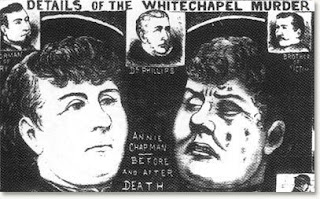I should begin this post with a slight warning as the content herein is likely to be a little more prurient than the ones that have come before.
 |
| Victorian Erotica |
Daniel McDuff is a spoilt, vulgar, abusive and manipulative bully. While the identity of the Ripper is unknown throughout the majority of the novel, Duffy is the primary villain from the very first page.
Of the three Ravens who dine at The Broken Fox, Duffy is not only the instigator of the plan which will lead them all into Whiechapel, but the only one to show open hostility towards the prostitutes it is home to. His fetishisation of "dirty girls" may seem unusual to a modern day reader, but just how prevalent were these views in Victorian society?
The first source of inspiration I had in creating the character was my experience of living in a shared flat with three other young men, one of whom was so uniquely vile in his approaches toward women, that years later, Daniel McDuff would essentially end up writing himself.
To listen to this man talk was to be assaulted by a barrage of spittle laden invectives, in equal parts desirous and repulsed by the women he would bed, women who seemed to him little more than a series of holes with breasts attached. Perhaps what was even more alarming, was how frequently these drunken and sleazy advances actually proved successful. This man had cornered the market for women with low expectations.
 |
| Arthur Munby |
Munby was a poet, a teacher of Latin, a soldier and a diarist. It is these diaries that will forever give insight into the mind and loins of this very Victorian pervert. Munby's particular kink was for working class women with accents that were unburdened by elocution lessons. He filled his pages with baroque images of oddly proportioned women - huge feet and hands and squat bodies with fat behinds.
 |
| An Arthur Munby portrait |
Arthur Munby seems to me as a harmless enough chap and I hope that his ghost wouldn't be too offended by my equating him with such a monster as Duffy, as while their desires may have been similar, Munby seems by all accounts to have had a great deal of respect and admiration for the working class, whereas Duffy has anything but. He casually sneers at the poverty stricken while fantasising about groping through their dirty clothes.
If anything positive can be said about Daniel McDuff, it is that he is at the very least honest. There is no attempt at subterfuge or cowardice on his part. He is what he is. Would a gentleman such as him use such profane language in public? There is no reason to suggest he would not, as the works of many writers of the age refer broadly to the vulgar language of the wealthy. In fact, it has often been said that the working class and the upper class have far more in common than they may think. They drink just as much, they swear just as much and have just as much sex with just as many people - their wealth is the only true divider between them, and all the while it is the middle class who are clutching at their pearls and insisting that "really, something must be done!"
So with the close of this post, I bid a farewell to Duffy and in doing so wave goodbye to the one of the most repellent, yet enjoyable characters to write in 1888. I also bid adieu to that odious man I had to share a flat with all those years ago. He most certainly will not be missed.
Yours truly,
Charlie Revelle-Smith



















